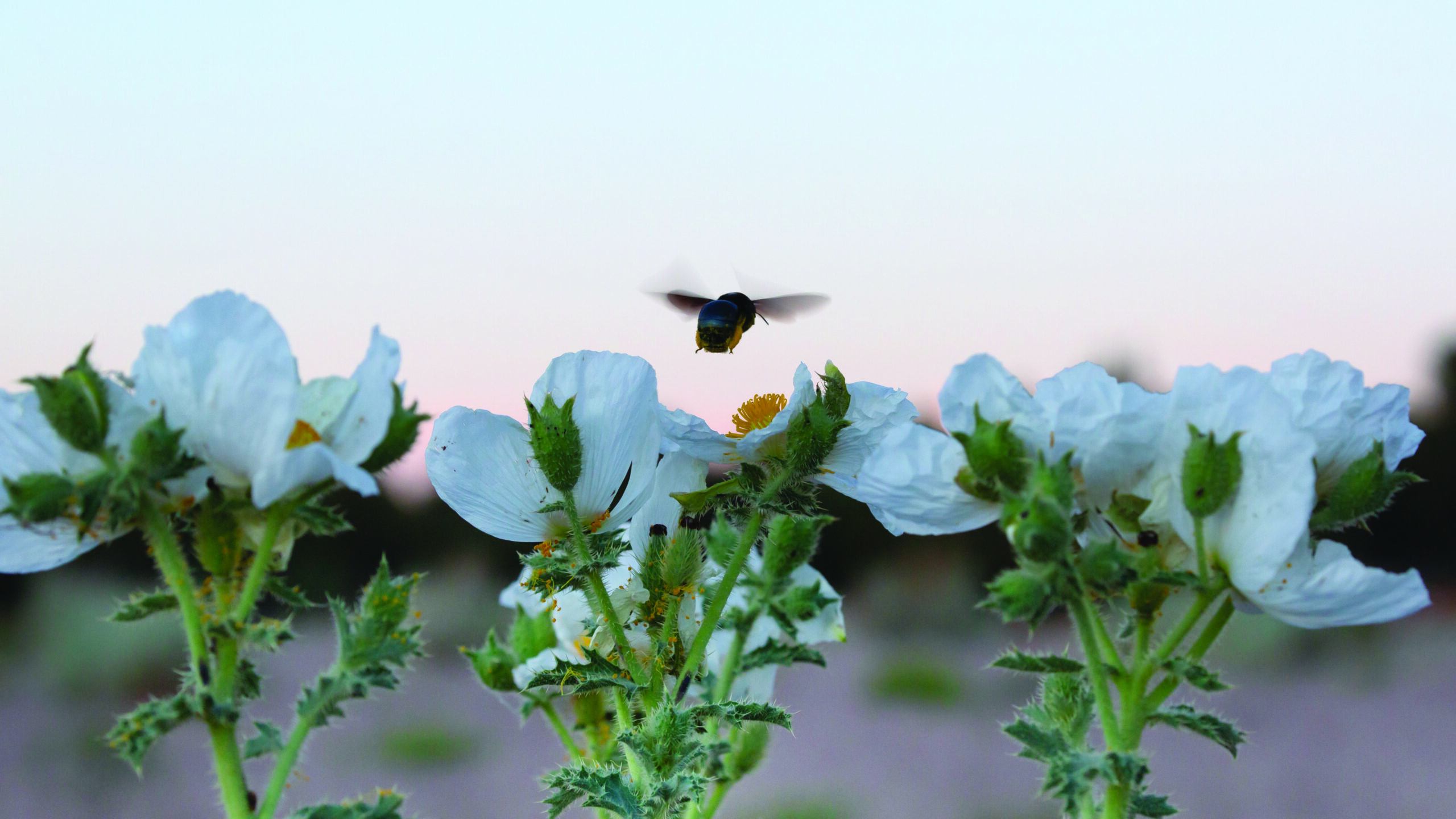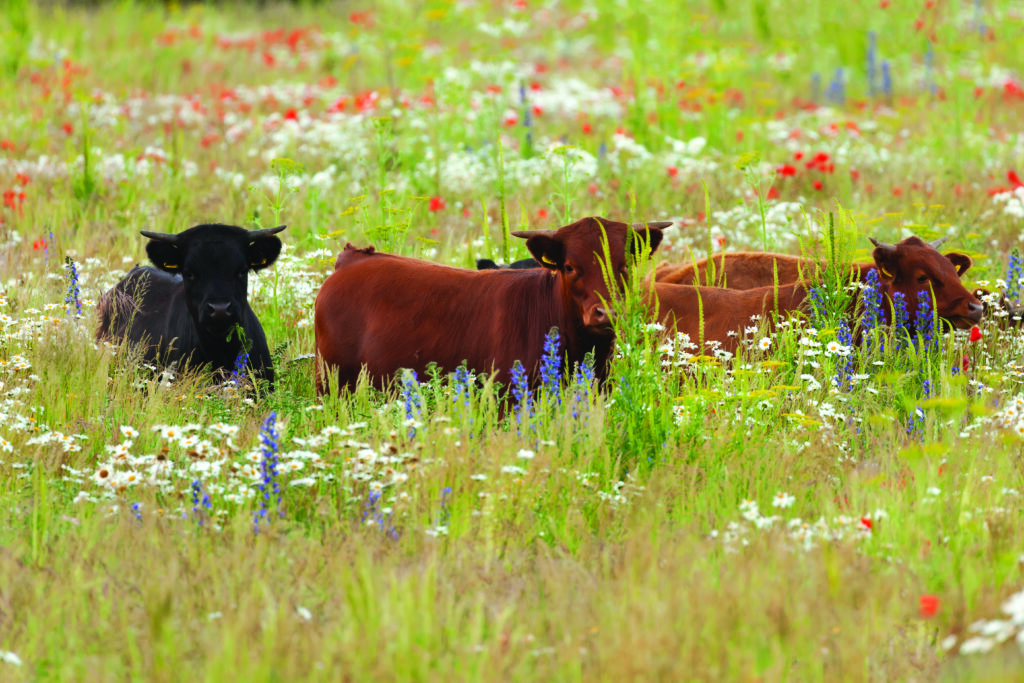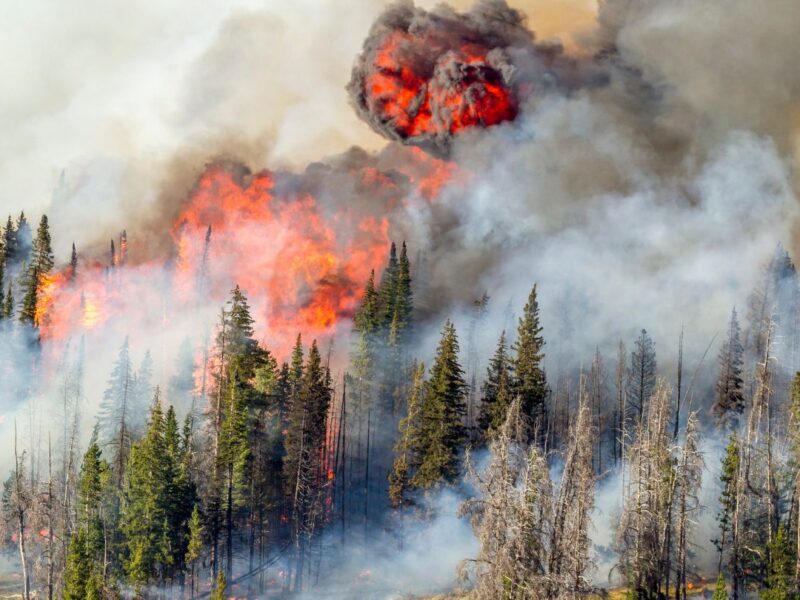
Can managed grazing help stave off the native pollinator die-off?
Pollinators, especially native bees, are in decline around the world and in the American West. What impact does livestock grazing, one of the most extensive uses of native grassland habitat in the West, have on native bees? Research by Hayes Goosey, Gabrielle Blanchette and David Naugle, recently published in the Journal of Insect Science, sought answers to this question. The study, supported by USDA’s Working Lands for Wildlife (WLWF) program, reports that grazed pastures hosted two to three times more native bees than did idled pastures.
“Native bees . . . are the primary pollinators in rangeland ecosystems . . . (and) it has long been believed that the availability of native flowering plants is a primary determinant of the composition and abundance of bees and other pollinators,” the authors write. “But other factors, including the availability of bare ground and the amount of dead and decaying litter on the ground, also impact bee abundance and diversity.”
The study examined abundance of native pollinators in Montana rangelands managed under three different grazing regimes – idled pastures in a wildlife refuge that had been ungrazed for more than a decade, pastures enrolled in a managed-grazing program through the USDA-NRCS’s Sage Grouse Initiative, and pastures with owner-controlled grazing regimes.
Results showed bare ground covered twice as much of the grazed pastures (15%) as of idled pastures (7%). Litter accumulation on grazed pastures was half (12%) that of idled pastures (24%). Because ground-nesting bees rely on bare ground for nesting and reproduction, this correlation highlights the critical role that accessible bare ground plays for native rangeland pollinators like ground-nesting bees.
While it may be surprising to hear that bare ground within grazing lands can benefit some guilds of wildlife, these findings echo study results for avian species.
A Nebraska grazing study published in 2023 found that sites with little accumulation of plant litter had higher densities of lark sparrows, but reduced densities of western meadowlarks and grasshopper sparrows, both of which favored sites with more litter. Similarly, a Montana study from 2020 found that thick-billed longspurs selected sites with lesser amounts of above-ground herbaceous biomass; chestnut-collared longspurs and Sprague’s pipits selected for intermediate plant biomass; and Baird’s sparrows were associated with greater amounts of residual grass and litter cover.

The bottom line? Grazing land managers are ecosystem engineers, and livestock are agents of change. We’ve long understood that grazing practices influence animal performance and plant productivity, and that those together impact ranch profitability. Emerging research on pollinators reinforces that, as Sam Fuhlendorf (Groendyke Chair in Wildlife Conservation at Oklahoma State University) and colleagues wrote in the 2017 textbook “Rangeland Systems,” “Shifting mosaics of landscape patches are necessary for maintaining ecosystem structure and function and achieving multiple objectives such as improved productivity and stability of livestock production and conservation objectives. Managing for a single condition, state, phase, or successional stage is incapable of sustaining livestock production and is not capable of promoting biodiversity or multiple uses.”
In other words, maintaining diverse and productive native rangelands supports viable grazing operations, on both public and private lands. In turn, grazing operations that promote a mosaic of grassland communities and plant cover are a key tool for supporting native wildlife, including bee populations and the pollination services they provide.




